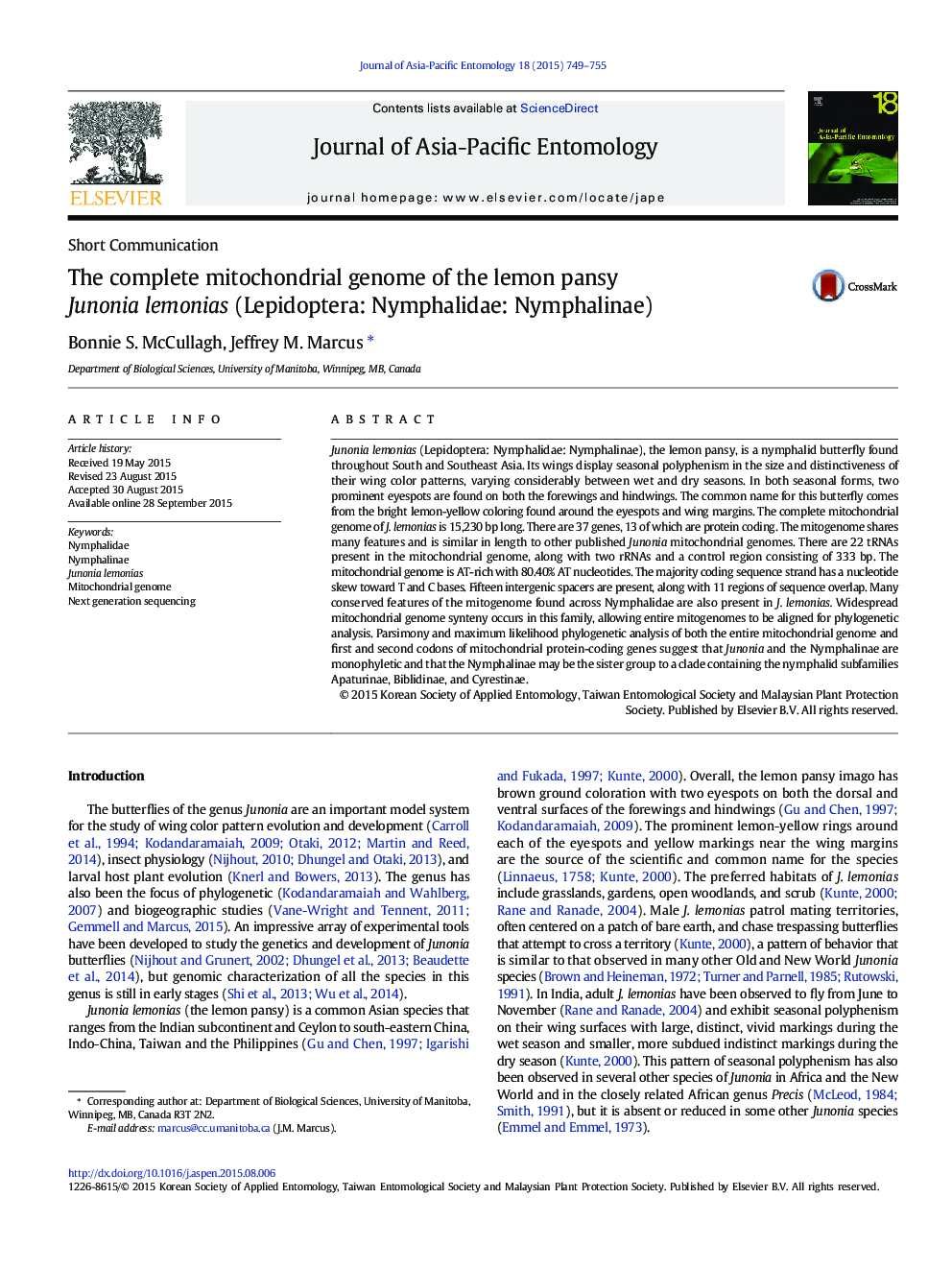| Article ID | Journal | Published Year | Pages | File Type |
|---|---|---|---|---|
| 4524381 | Journal of Asia-Pacific Entomology | 2015 | 7 Pages |
•The Junonia lemonias mitochondrial genome is composed of 15,230 bp.•The Junonia lemonias mitogenome maintains synteny with other Nymphalid butterflies.•Phylogenetic analysis of mitogenomes supports monophyly of subfamily Nymphalinae.•The Nymphalinae may have a sister relationship to a clade containing the subfamilies Apaturinae, Biblidinae, and Cyrestinae.
Junonia lemonias (Lepidoptera: Nymphalidae: Nymphalinae), the lemon pansy, is a nymphalid butterfly found throughout South and Southeast Asia. Its wings display seasonal polyphenism in the size and distinctiveness of their wing color patterns, varying considerably between wet and dry seasons. In both seasonal forms, two prominent eyespots are found on both the forewings and hindwings. The common name for this butterfly comes from the bright lemon-yellow coloring found around the eyespots and wing margins. The complete mitochondrial genome of J. lemonias is 15,230 bp long. There are 37 genes, 13 of which are protein coding. The mitogenome shares many features and is similar in length to other published Junonia mitochondrial genomes. There are 22 tRNAs present in the mitochondrial genome, along with two rRNAs and a control region consisting of 333 bp. The mitochondrial genome is AT-rich with 80.40% AT nucleotides. The majority coding sequence strand has a nucleotide skew toward T and C bases. Fifteen intergenic spacers are present, along with 11 regions of sequence overlap. Many conserved features of the mitogenome found across Nymphalidae are also present in J. lemonias. Widespread mitochondrial genome synteny occurs in this family, allowing entire mitogenomes to be aligned for phylogenetic analysis. Parsimony and maximum likelihood phylogenetic analysis of both the entire mitochondrial genome and first and second codons of mitochondrial protein-coding genes suggest that Junonia and the Nymphalinae are monophyletic and that the Nymphalinae may be the sister group to a clade containing the nymphalid subfamilies Apaturinae, Biblidinae, and Cyrestinae.
Graphical abstractFigure optionsDownload full-size imageDownload as PowerPoint slide
